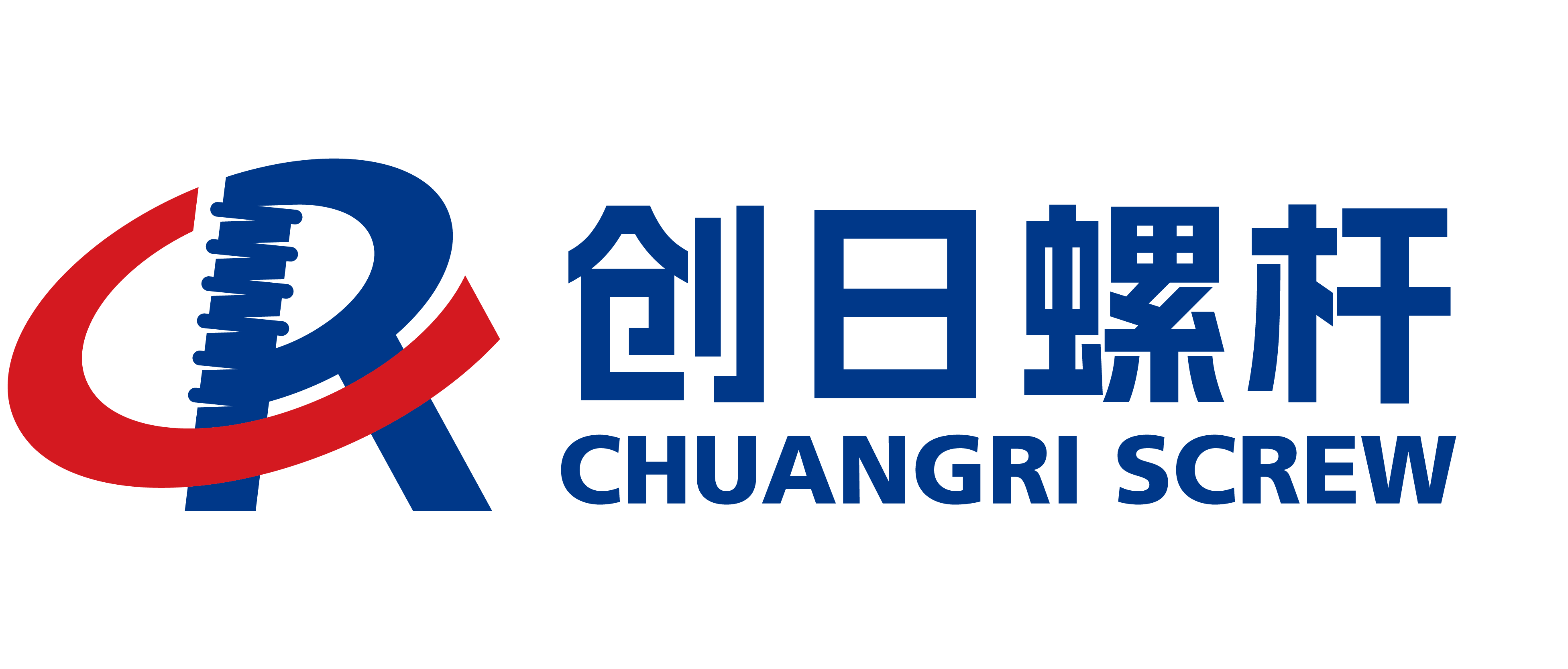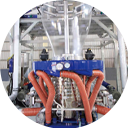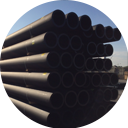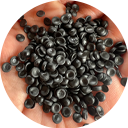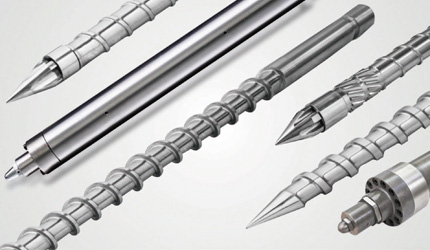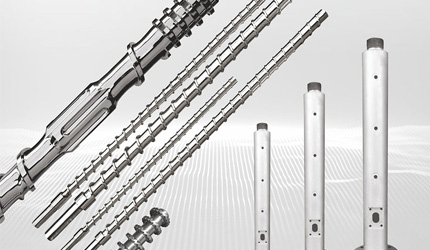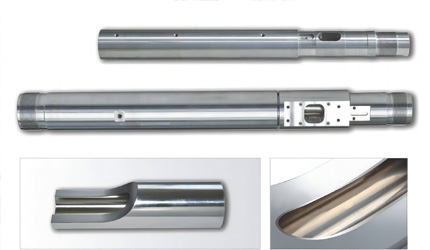Barrel Injection Dynamics: A Deep Dive into Molding Processes
Barrel Injection Dynamics: A Deep Dive into Molding Processes
What Is Barrel Injection and How Does It Shape the Molding Process?
Key Components of a Barrel Injection System
A barrel injection system is the core of any plastic injection molding machine. It’s got key parts that team up to melt, mix, and shoot plastic into molds. The main players are the barrel, screw, heater bands, thermocouples, and nozzle. Barrels are key components in injection molding and extrusion processes. The barrel holds the spinning screw and creates a hot zone to melt plastics. A screw performs three basic functions: solid conveying, melting, and metering or pumping. Every part needs to be spot-on to handle high heat and pressure without a hitch.
How Barrel Injection Influences Melt Homogeneity and Flow
Barrel injection is a big deal for making sure plastic melts evenly before hitting the mold. The screw’s shape and the barrel’s heat settings work together to avoid lumpy or half-melted material. By spreading heat and shear evenly along the barrel, the system keeps the melt’s thickness just right. This smooths out the flow in the mold, cutting down on flaws like short shots or weld lines. Whether you’re aiming to reduce cycle times, improve melt quality and consistency, achieve more uniform melts, or enhance material quality by reducing excessive shear or long residence times, CHUANGRI SCREW offers custom-designed barrels to tackle the toughest challenges.
The Role of Temperature and Pressure in Barrel Injection Dynamics
Heat and pressure control in the barrel are make-or-break for great plastic processing. Heater bands set different temp zones along the barrel to match the stages of plasticizing—feeding, squeezing, and pumping. Pressure comes from back pressure during melting and injection pressure when filling molds. Too much heat can wreck the plastic, while too little makes it flow poorly. Getting these dialed in saves energy, boosts part quality, and keeps equipment running longer.
Why Is the Barrel Injection Screw Design Critical for Efficient Molding?
The Function of Screw Geometry in Material Plasticizing
Screw shape is a game-changer for turning raw plastic into a smooth melt ready to inject. A standard screw has three zones: a feed zone for moving solids, a compression zone for melting with shear heat, and a metering zone for steady flow. CHUANGRI SCREW combines the simplicity and cost-effectiveness of traditional three-zone screws with the productivity and quality advantages of optimized material feeding, melting, and metering zones. The right shape ensures quick energy transfer during melting while keeping residence time short to avoid material breakdown.
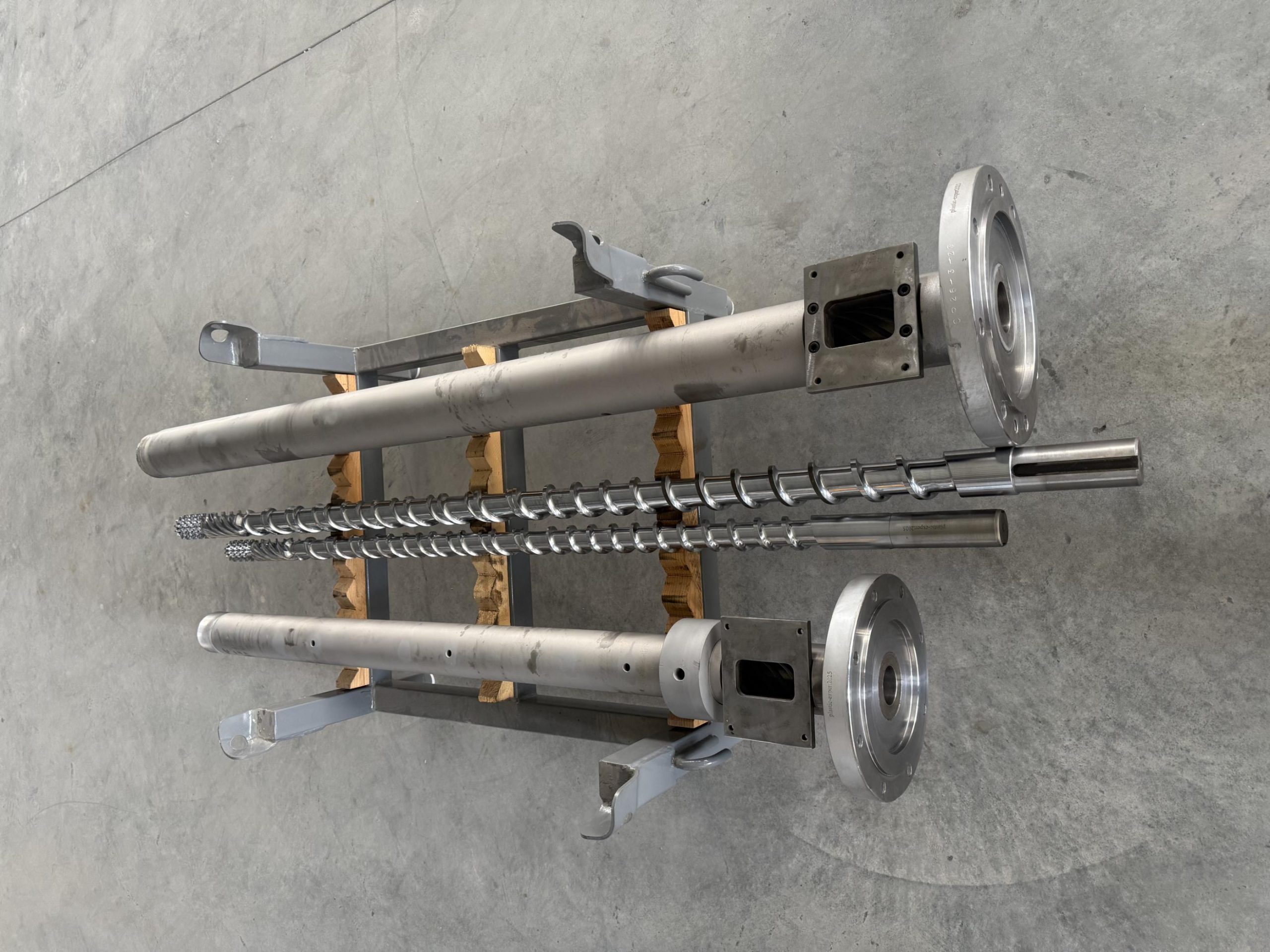
Impact of Compression Ratios on Material Behavior
Compression ratio—the depth difference between the feed and metering zones—controls how much work goes into melting the plastic. High ratios crank up shear heat but might harm delicate plastics. Lower ratios are gentler, great for filled or heat-sensitive materials. Picking the right ratio depends on the plastic type, filler amount, output speed, and heat stability needs.
How Screw L/D Ratio Affects Throughput and Mixing
The length-to-diameter (L/D) ratio of a screw decides how well it mixes while keeping output snappy. Long screws with high L/D give more time for mixing but risk overheating if not managed right. Short screws fit fast-paced jobs where less mixing is okay. Choosing the perfect L/D balances speed with quality based on what you’re making.
How Do Different Materials Respond to Barrel Injection?
Thermoplastics vs. Thermosets in Injection Molding
Thermoplastics soften with heat and harden when cooled, perfect for barrel injection’s repeat heating cycles. Thermosets, though, lock into shape permanently after curing, needing special handling that doesn’t jive with standard barrel injection setups. Plastics like ABS or polycarbonate need tight heat control in barrels to avoid warping or spotty mold fills due to thickness changes.
Influence of Fillers and Additives on Injection Parameters
Filled plastics, like those with glass fiber, flow way differently than plain resins. They need more muscle to process because they’re thicker. Capable of processing materials containing up to 75% glass fiber, screws built for these often have tough coatings or tweaked shapes to mix fillers well without breaking them. Additives like flame retardants or UV stabilizers can also make plastics more heat-sensitive, so barrel temps need careful tuning.
Challenges When Processing High-Temperature Polymers
High-performance plastics like PEEK or PPS need scorching temps, often over 350°C, which stress barrels and screws to the max. The bimetallic barrel for a single screw extruder is a kind of barrel spray 2-5mm thick alloy coat on the barrel inner wall, which has excellent corrosion resistance, abrasion resistance, and high working temperature. These tough setups last longer when dealing with gritty or harsh materials at high heat.
What Are the Common Issues in Barrel Injection and How Can They Be Resolved?
Identifying Causes of Inconsistent Shot Size or Flow Lines
Uneven shot sizes often come from bad melting due to worn screws or barrels, or shaky back pressure. Flow lines might mean the plastic is cooling too soon because of wonky temp settings in the barrel or mold. Regular checks with infrared sensors or pressure gauges can catch these hiccups early before they mess up parts.
Addressing Thermal Degradation and Material Burn Marks
Burn marks happen when overheated plastic gets stuck in dead zones inside barrels or screws. Regular purging and smart screw designs help avoid this. Installing screws with barrier sections can boost melt turnover, cutting the odds of trapped resin turning into ugly burn spots.
Maintenance Practices to Extend Barrel and Screw Life
Preventive maintenance means checking for wear with tools like bore gauges or ultrasonic testers. Stick to tight lubrication schedules and clean thoroughly between material switches. Bimetal has more obvious advantages when processing special plastics to enhance the abrasion life, making them top picks for shops handling gritty compounds often.
Who Is CHUANGRI SCREW and What Makes Our Barrel Injection Solutions Stand Out?
Our Expertise in Precision Screw Design for Barrel Injection Systems
At CHUANGRI SCREW, we’re all about crafting top-notch feeder screws for extrusion and injection molding, fitting all brands and sizes. We focus on the plastic extrusion and injection molding industries, providing feeder screws and barrels for all brands, models, and sizes. Our engineering crew works hand-in-hand with clients to deliver slick solutions that boost output while keeping parts top-quality, from car bits to medical gear.
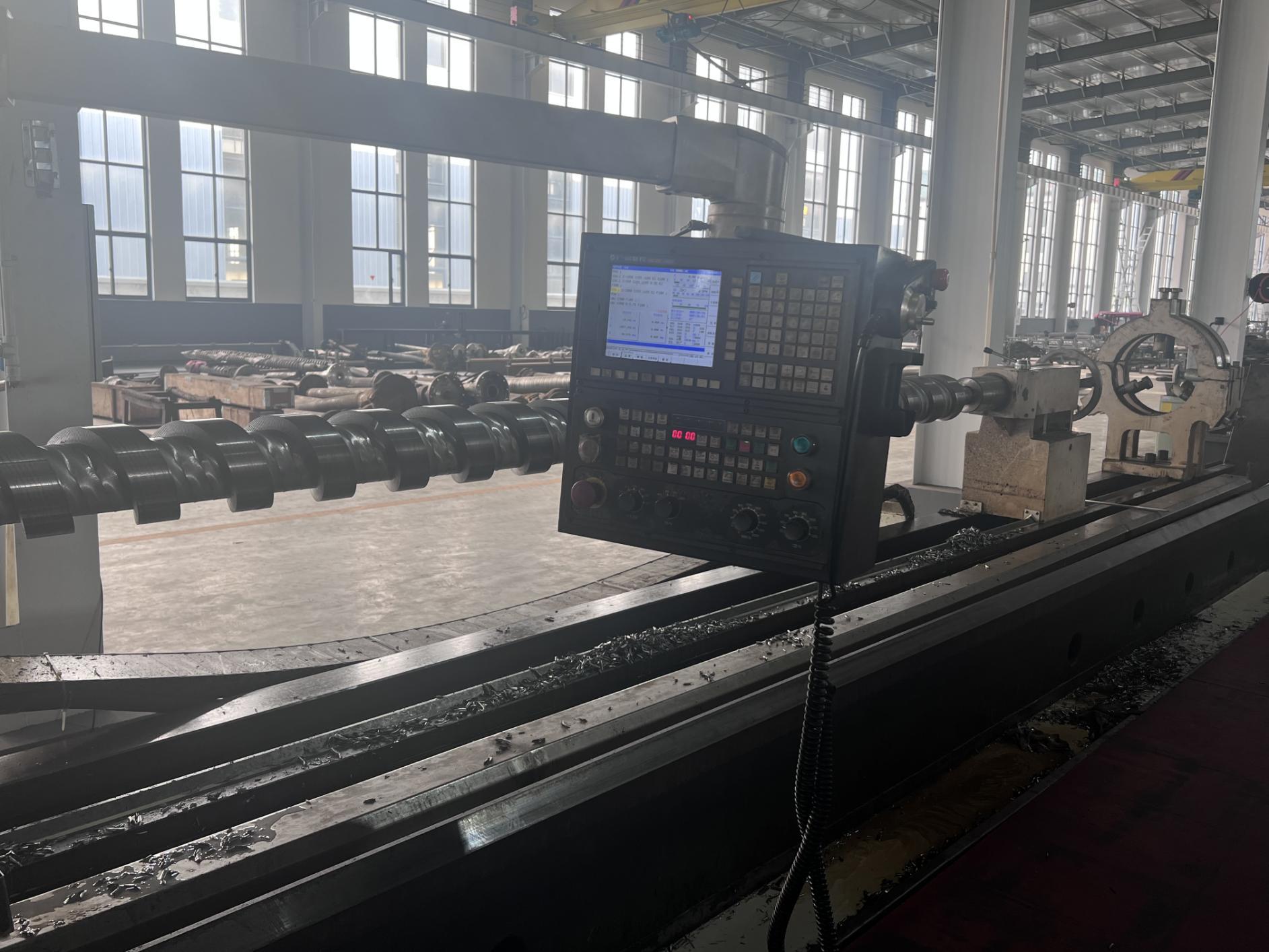
Product Highlights: Bimetallic Screws, Barrier Screws, and Mixing Screws
We’ve got a killer lineup, including bimetallic coated screws that shine under tough wear or heat, barrier screws for better mixing, and solid carbide options that handle up to 75% glass fiber content. CHUANGRI SCREW combines the simplicity and cost-effectiveness of traditional three-zone screws with the productivity and quality advantages of optimized material feeding. Our barrels can reach lengths up to 8000mm without splicing—ensuring structural integrity even under heavy-duty operations. CHUANGRI SCREW’s injection molding barrels can reach a maximum length of 8000mm (315 inches) without the need for splicing.
Customization Capabilities Tailored to Industry-Specific Needs
Every job’s got unique needs, so our solutions flex to match plastic types, filler levels, output goals, or cycle times. With any diameter and length, and compatible with any brand or model, we can design and manufacture custom feed screws for your team. Whether you’re making household goods or fancy electronics, we’ve got a setup that slides right into your workflow.
Why Clients Trust CHUANGRI SCREW for High-Performance Molding Applications
Clients pick CHUANGRI SCREW for our tech smarts and quick support, from first chats to post-install tweaks. Let’s work together to design the optimal screw for your production line. We use premium materials like H13 steel alloys coated with advanced PTA welding techniques. Our company uses special alloy powders being sprayed and welded on the top of screw flights, delivering tough performance and longer life.
FAQ
Q: What is barrel injection used for in plastic molding?
A: Barrel injection melts plastic pellets evenly before shooting them into a mold under pressure for injection molding.
Q: How does screw design affect output in an injection molding machine?
A: Screw shape, like its compression and L/D ratios, tweaks melting, mixing, and output speed during molding.
Q: What causes burn marks in molded parts?
A: Burn marks come from overheated, stuck resin in dead zones due to bad temp settings or worn barrels/screws.
Q: Can bimetallic barrels handle abrasive materials better?
A: Yup! Bimetal has more obvious advantages when processing special plastics to enhance the abrasion life, perfect for glass-filled or tough resins.
Q: What maintenance helps prolong screw life?
A: Regular checks with bore gauges or ultrasonic tools, plus cleaning and lubrication, keep screws running longer with less downtime.
